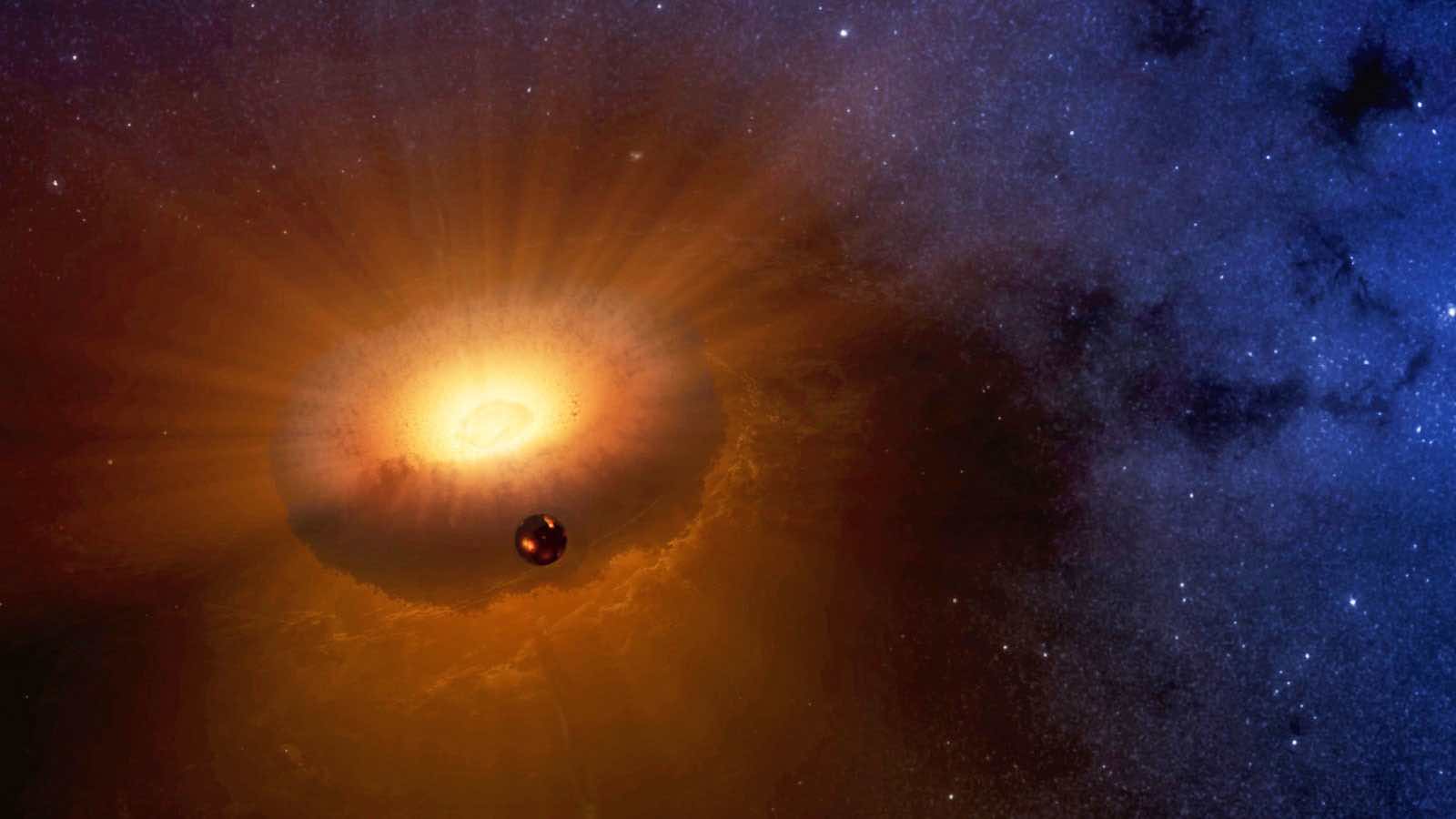
Researchers suggest that the moon formed inside the Earth, while our planet was a spinning cloud of vaporised rock, called a synestia.
Last year Simon Lock and Sarah Stewart, from Harvard University and the University of California, Davis respectively, proposed a bizarre new type of planetary body. Now they’re back, with a number of colleagues, to suggest that this body may have formed the Moon.
In a paper published in the Journal of Geophysical Research, the team suggests the Moon may have formed inside our planet when it was a spinning superheated disk of vaporized rock, called a synestia.
Our current best theory for how the Moon formed is that, about 4.5 billion years ago, our planet was hit by a Mars-sized object called Theia. This is the Giant Impact Hypothesis, with the resultant debris from the impact eventually coming together to create the Moon.
One problem, though, is that this theory can’t properly account for the composition of the Moon. So what if there was another way?
“In our new model, a more energetic impact vaporizes a substantial fraction of Earth and transforms Earth into a synestia,” Lock told IFLScience. “As the synestia cools, it shrinks inside the lunar orbit and the Moon emerges from the synestia.”
A synestia is basically a large donut of super-heated material, formed when two planet-sized objects collide. Temperatures inside a synestia reach up to 4,000 Kelvin, with pressures in the tens of atmospheres. They likely shrink rapidly though as they radiate heat, lasting only hundreds of years – a relatively tiny time in astronomical terms – before collapsing into a molten planet.
Inside the Earth synestia, chunks of molten rock would have been thrown into orbit by the impact, providing giant “seeds” for the Moon. Vaporized rock would have rained onto the proto-Moon as the synestia shrank, eventually leaving two large bodies – Earth and the Moon.
The high temperatures that the Moon formed under would mean it lost some of its more easily vaporized elements, which could explain its slightly different composition.
One of the benefits of this theory for explaining the Moon’s formation is that there are multiple ways to form a synestia. You don’t need an exact impactor size at a specific time, just a big enough impact to create this swirling mass of molten rock.
We’ve never seen a synestia so they’re very much only theoretical at the moment. But Lock said that by improving estimates of the Moon’s composition, it could be possible to work out the conditions in which the Moon formed, and see if they’re consistent with the idea.
“People have theorized similar structures could be formed by rapidly rotating stars and gas giants but nothing has been directly observed,” said Lock. “I hope that we might be able to find synestias in future exoplanet surveys.”













